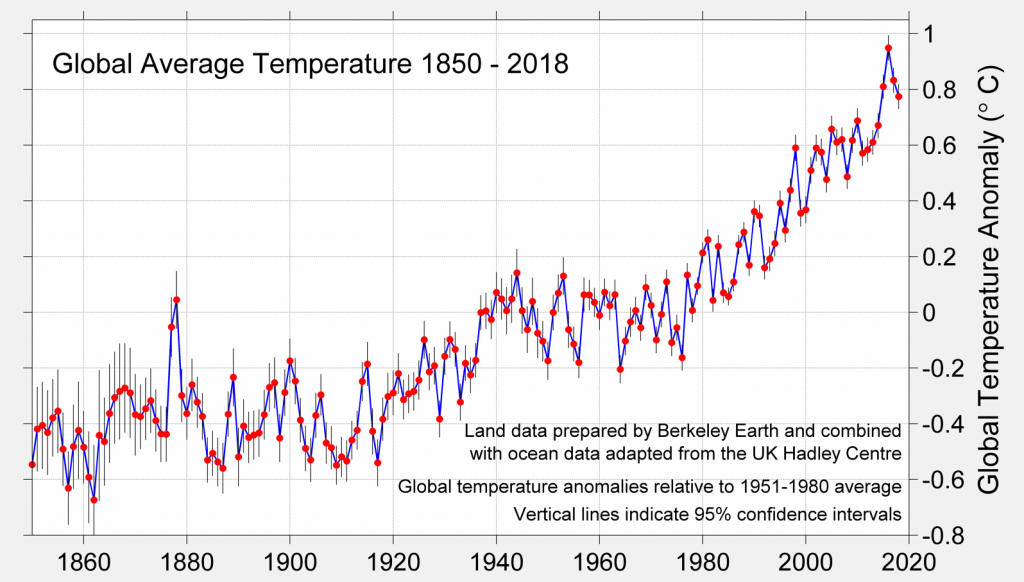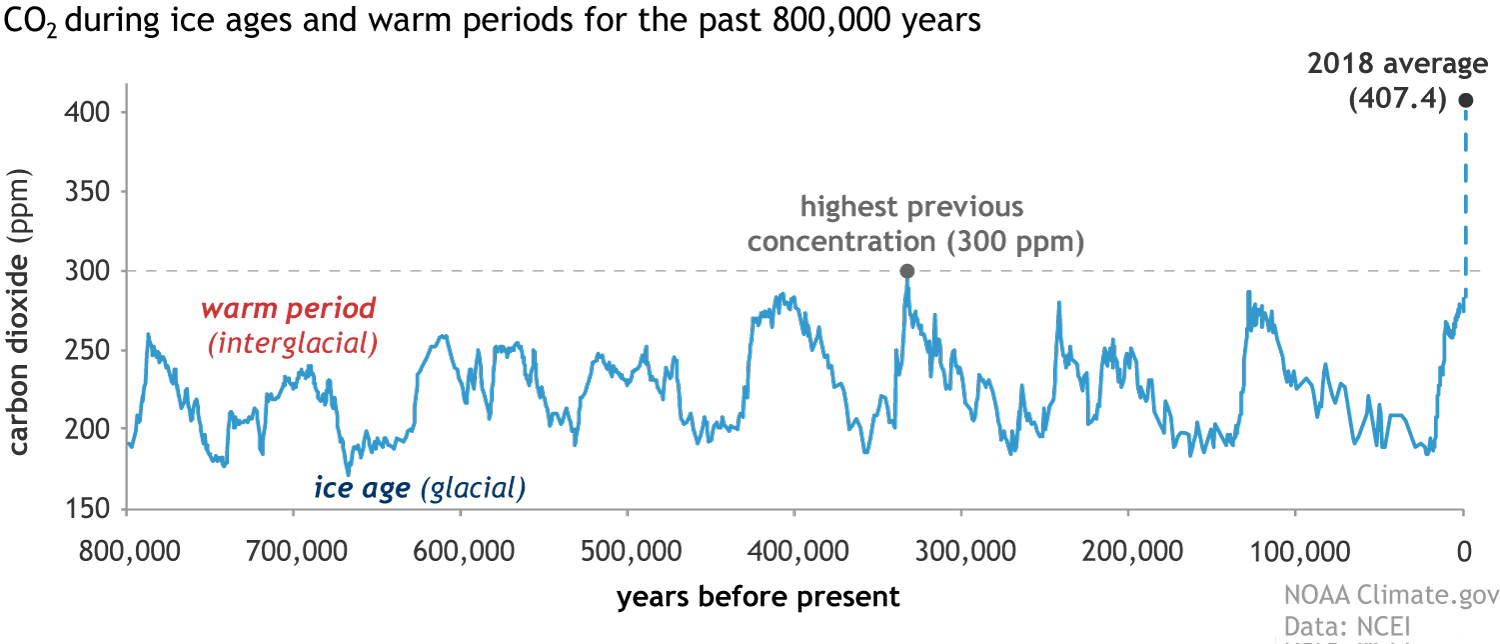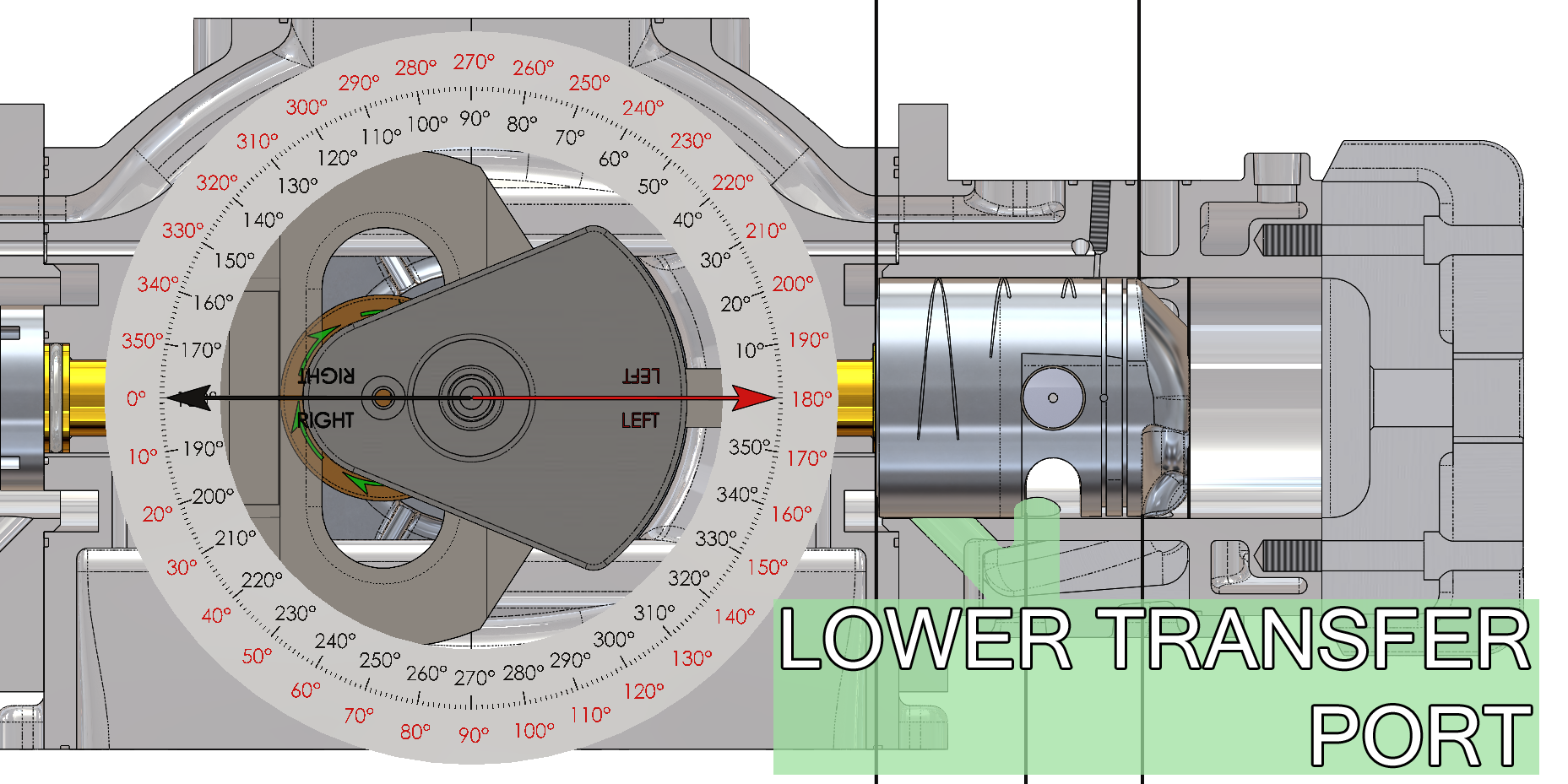Lower Transfer Ports
Right Cylinder
BEAU de ROCHA FUNCTIONS / ATTRIBUTES
The lower transfer ports are opened by the piston skirt/window for 360 degrees of crankshaft travel (black arrow and black degree compass on the animation). The lower transfer ports are equal in area to the exhaust port area and are arranged in a triangular formation to prevent “shocking” the incoming fresh air/fuel mixture (the transfer area is always at or near the same pressure as the pressure under the piston as the piston seals off the intake ports and compresses the fresh air/fuel mixture underneath the piston against the crankcase facing). The following function that Beau de Rocha identified in 1862 has been accomplished:
- Intake (from under the piston to the combustion chamber)
RUSSELL BOURKE’S FORMULA
- Port openings are arranged so that as the bottom port of the triangle is closing, the two (2) window ports are opening (black arrow and black degree compass on the animation). The triangular arrangement is duplicated from Russell Bourke’s 30 cid marine engine because the 10 cid unit is a high speed engine (12,000 rpm) whereas the 400 cid engine was a low speed engine (1,800 rpm) and did not have the triangular configuration.
All of the volumes shown below for the 10.842 cubic inch (177.6748 cc) model were calculated using Solid Works:
- The volume under the piston when it is at Top Dead Center (TDC) is 166.478 cubic centimeters (cc), or 10.1591 cubic inches.
- The volume under the piston when it is at Bottom Dead Center (BDC) is 88.7875 cc, or 5.4181 cubic inches.
- The volume in the combustion area when the piston is at Bottom Dead Center (BDC) is 88.8374 cc, or 5.4212 cubic inches.
- The volume in the combustion area when the piston is at Top Dead Center (TDC) is 7.2358 cc, or 0.4416 cubic inches.
The compression ratio for this model is calculated by dividing the volume at BDC by the volume at TDC (88.8374 cc/7.2358 cc =12.28:1 compression ratio).

Global Warming
The chart shows the increase in global average temperature from 1850 to 2018.
Source: Berkeley Earth
Carbon Dioxide In Our Atmosphere
Read all of the scientific reports!!!!!! We are at 415 parts per million, more than anytime in the last 800,000 years. The Bourke Engine using fuel from algae for all transportation and distributive power generation will reduce our carbon footprint for these activities by AT LEAST 85%.


WAKE UP WORLD, WE ARE KILLING OUR PLANET!!!!
2019 – Was the Second Hottest Year on Record!!!!
Global Ocean Acidification
As our oceans absorb excess carbon dioxide, the carbon dioxide reacts with the sea water forming carbonic acid which is changing the pH of our oceans making them more acidic. Research is ongoing as to how the increased acidic level of our oceans is affecting corals and marine life.
Source: IPCC 2007
©2019 Copyright Bourke Engine Project, LLC
All Rights Reserved. All of the information contained within this website can be used, with permission, by any other website providing that the requesting party agrees to the terms and conditions as described in the PERMISSION FORM.
© Copyright 2019-2023 Designed by Lynn





